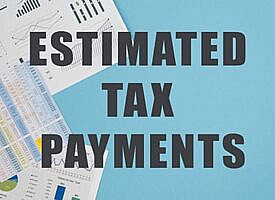Whether you’re Irish or just love the holiday, there’s no denying the joyous energy that surrounds St. Patrick’s Day. But don’t go searching for the end of the rainbow just yet; there is still time to bring down your 2022 income tax liability. A handful of tax-deductible opportunities are still possible for eligible taxpayers who haven’t already taken these tax-saving actions. Here are three of the simplest things you may be able to do now that can reduce the tax bill you will owe in April.
Traditional IRA Contributions
Did you contribute the maximum amount to a traditional IRA in 2022? If not, doing so now is a great way to lower your taxable income. For the 2022 tax year, you can make tax-deductible contributions of up to $6,000 ($7,000 if you’ve reached the age of 50) if you earned taxable income to report on your return. The contribution limit applies to the total of all the contributions you make no matter how many traditional IRAs you have, but you are free to divvy up the dollars any way you wish. You have until the tax deadline for 2022 to make contributions—that is April 18, 2023.
Your taxable earned income for the year must equal or exceed the amount of your IRA contribution, so if you earned less than the maximum then you can only contribute up to the amount you earned. There is an exception to that rule: Even if you didn’t earn taxable income, you may be able to contribute to an IRA if your spouse did receive taxable compensation and you are filing jointly. In that case, both you and your spouse can contribute amounts up to the limit. Pay close attention to the details though; your combined combinations may not exceed the amount of taxable earned income that you report on your joint tax return for the year.
You can deduct the full amount of your contributions to an IRA if there is no retirement plan at your workplace or your spouse’s workplace, but if you or your spouse has access to a retirement plan through a job then your IRA contribution may not be fully deductible. In this situation, you may qualify for a partial deduction or no deduction at all, depending on your modified adjusted gross income and your filing status.
Health Savings Account Contributions
For those who are eligible, contributing to a health savings account (HSA) can be a smart way to save for current and future healthcare expenses while reaping generous tax benefits. These accounts let you make pre-tax contributions and pay for qualified medical expenses with tax-free dollars. Unlike an employer-sponsored flexible spending account (FSA) for health care expenses, the money in your HSA never has to be forfeited. The funds roll over indefinitely and can continue to grow, tax-free. They are not available to everyone, though. To use an HSA, you must be enrolled in an HSA-qualified high-deductible health insurance plan.
The federal government sets annual contribution limits for HSAs, as with other types of tax-advantaged accounts. If you have health coverage for just yourself, you can make tax-deductible HSA contributions of up to $3,650 for 2022; the limit is $7,300 if your plan covers your family. Those limits rise by $1,000 if you are 55 or older. Don’t go over the contribution limits—excess contributions can incur tax penalties. You can make contributions to your HSA for the 2022 tax year until April 18, 2023.
SEP-IRA Contributions
Self-employed taxpayers have a longer window for making certain kinds of retirement contributions than W-2 workers enjoy. If you’re self-employed, you can deduct contributions to a qualified SEP-IRA plan for yourself or an employee until the due date (or the extended due date if you file for an extension). Employers’ SEP-IRA contributions for 2022 are capped at 25% of the employee’s compensation or $61,000, whichever is smaller.
Remember, you can file later, but you can’t pay later
It is not always possible to complete your tax return by April. That is not a problem because you can have an extension of time to file simply by requesting it from the IRS. But, be clear about what you’re asking for and receiving: it’s an extension of time to file, not an extension of time to pay the tax you owe.
The extended due date will buy you six more months to submit your completed return; the extended due date for filing 2022 tax returns falls on October 16, 2023. However, you must still figure out what you’ll owe and pay the estimated amount by the standard due date of April 18, 2023. Missing the deadline means you’ll owe interest and penalties, too.
Contact your advisor or reach out to the tax professionals at Mauldin & Jenkins for more ways to save on your taxes. Just don’t delay, because April will be here sooner than we think.




